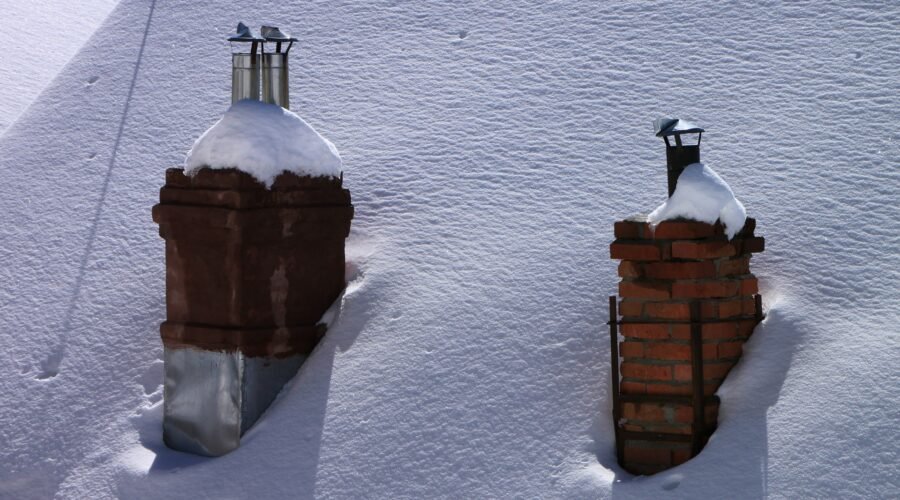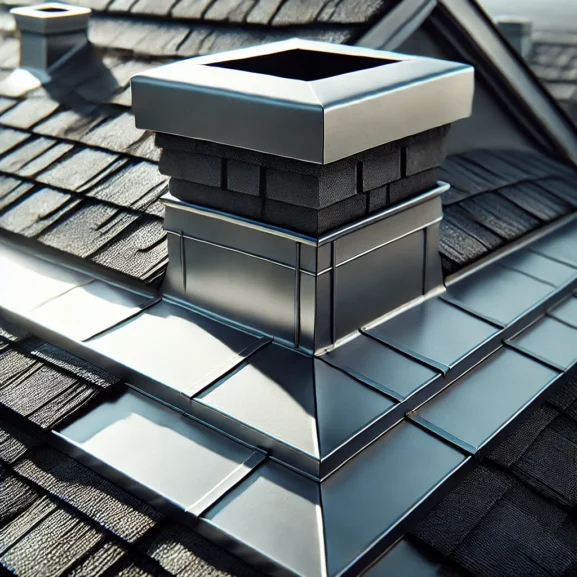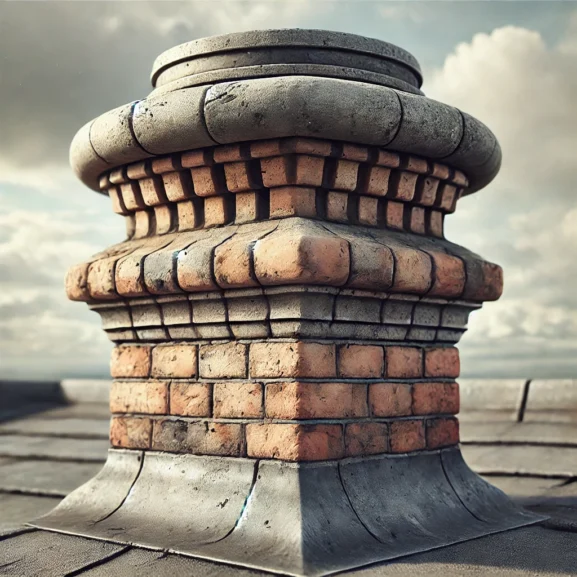Preventing Damage from Snow and Ice Buildup on Chimneys: Tips and Solutions
As they say, the winter season is beautiful but do remember there are so many dangers lurking especially to our homes. Chimneys are equally at great risk as the snow and ice build up; this is well, understood by many individuals. These structures so necessary for warmth and shelter are not immune to the weight and condensation of the winter season.
Snow and ice create substantial problems for chimneys, because it often leads to cracks, leakage, and even splitting of the chimney. This not only aesthetically unpleasing but also poses a probable threat in the future as it results to repair costs and possibly be dangerous. Winter puts our chimneys at great risk and knowing how it impacts our chimneys enables us to safeguard it.
In this text, you will discover which type of chimneys is affected by snow and ice, how to notice that there is a problem, and how to avoid it. It is therefore important for us to stay informed to make sure our homes are warm and risk free during the winter time.
Preventing Snow and Ice Buildup on Your Chimney: What Homeowners Need to Know
Chimney coverings with snow may bring big troubles, and during NJ winter it is especially a problem. It means we know that ice is not a joke as far as chimney structures are concerned – and no-one wants a chilly greeting inside their home! Allow us, our team, to present the best ways to ensure your chimney is safe and works properly.
Regular Maintenance
One can include a habit of winter chimney checkups in order to reduce chances of leakage during snow. In particular, homeowners need to arrange such inspections at least two times per year. A professional sweep can detect such disturbances before marked snowdrifts accumulate. Learn more about keeping your chimney clean from the National Fire Protection Association.
Flashing and Sealant Check
Check on chimney flashing and sealants to make sure they are well secured. These materials prevent ice dams on chimneys, and they crack easily whenever the temperature is very low. Maintenance or repair works should be done by a professional hand.
Chimney Caps
Chimney caps should be installed to prevent accumulation of snow and any type of freezing rain. This necessary device prevents accumulation of pests and water which freezes chimney flues.
Exterior Bracing
If you care about snow related issue on chimney, then exterior bracing is advisable. Chimney maintenance doesn’t have to be a struggle to battle through a winter that can seems so biting and unrelenting.
Common Types of Damage

Foul and continuous snow on chimneys during winter threaten to chock it given various consequences if not well handled. Different problems such as cracks in the structures and blockage may happen. Homeowners should be applicative in extra care owing to severities of winter.
Structural Cracks
Sacrification of chimney structures by ice can be severe. But instead, as it snows, the snow builds and freezes and thaws and swells and opens every wound on the land. Chimneys are also vulnerable to freezing effects with time leading to their weakening. They may include; breakages in the bricks or the mortar to mention but a few, which lowers the structural soundness.
- Look for visible gaps
- Check for loose bricks
- Notice any leaning or shifting
These concerns may result into snow related chimney collapse. Our specialists can save you from such cases and provide professional snow and ice chimney repair timely. You can fill out the form on our website and schedule your free consultation.
Water Leakage
One more problem related to the formation of ice dams is leakage in houses, especially in chimneys. Ice and water damage happens by water dripping down the roof gliding under flashings due to melting snow. This leads to water spillage or formation of mould on various parts within the house.
- Inspect for water stains around the fireplace
- Monitor any dripping sounds
- Check damp odors
Ignoring these signs harms your dwelling’s structure and indoor air quality. Winter chimney maintenance is essential. Learn more from Chimney Safety Institute of America about preventing leaks.
Chimney Blockage
Ice formed at chimney flues should not be taken lightly! Buildups hinder the escape of smoke and other hazardous gases, so they cause inadequate ventilation. Soot and ice can accumulate in chimneys and many people do not realize how bad it is until the extent is very high.
- Experience smoke backup
- Notice unusual drafts
- Hear wildlife inside
Contacting a professional ensures winter chimney safety. Stay ahead of blockages and freezing effects on chimneys with tailored solutions from our experts.
Long-term Effects on Chimney Integrity
Snow and ice can secretly sabotage chimneys over time. Let’s explore how this cold duo causes trouble.
Decreased Efficiency
Chimney soot prevents fresh air from getting inside, thus making a fireplace cold. Water formed through ice accumulations affects chimney structures where it wears out bricks and mortar to allow air into the house. Gradually this cold invasion increases the efficiency of the home heating and thereby increases energy bills. Fancy staying warm this winter? Super important thing to remember: you should be cleaning our chimney with hatred every winter.
Increased Risk of Collapse
A chimney full of snow is not just cosmetically dusting off; it is a catastrophe waiting to happen. Ice loading on chimneys creates problems as do the external conditions such as snow-related chimney collapse that affects the structural composure of the chimneys. This action results in cracking and shifting effects on chimney freezings. This could lead to yet an embarrassing and expensive crash scenario over dinner parties!
Preventative Measures
Chimneys face serious threats from snow buildup and freezing effects during winter. Thankfully, a little preparation helps avoid ice damage to chimney structures and ensures winter chimney safety.
Regular Inspections
Regular inspections catch small problems before they turn into big ones. Check your chimney at least twice a year to spot early signs of trouble. Look for cracks, leaks, and any chimney leaks from snow. It’s like a check-up but for your chimney—no magazines in the waiting room! Inspections help address common issues like ice dams on chimneys. Our professional team evaluates every nook and cranny.
Installing Chimney Caps
Chimney caps are like little hats that keep snow and critters out. They block debris that causes blockages and prevent moisture from sneaking in, reducing ice damage to chimney structures. These caps also help stop snow buildup on chimneys. When dealing with winter weather’s impact on chimneys, it’s a cost-effective solution. Plus, you never know when a squirrel’s planning a winter vacation in your chimney.

Repair and Maintenance Solutions
Looking for ways to keep your chimney in top shape during winter? You’re in the right place. Addressing damage caused by snow and ice buildup on chimneys is crucial. Let’s explore some solutions.
Professional Repair Services
Chimney problems may leave homeowners feeling like they’re in a cold spot. Fear not, we’re here to help with professional repair services. We handle everything from ice damage to chimney structures to those pesky frozen chimney flues. Our experts identify and fix chimney leaks from snow and tackle ice dams on chimneys that winters love to throw at us.
- Inspection: We conduct thorough checks, catching issues like cracks or structural weaknesses caused by freezing effects on chimneys.
- Sealant and Flashing Repair: By replacing or repairing these, we guard against water entry and snow-related chimney collapse.
- Masonry Repair: Our services cover fixing cracks in bricks and mortar, ensuring chimney stability and performance.
For winter weather impact on chimneys, seeking expert help is the safest approach. Need assistance? Reach out to experts to book a consultation.
Note: We recommend relying on professionals instead of DIY for ensuring winter chimney safety.
Essential Chimney Maintenance Tips for a Safe and Warm Winter
Winter is harsh to chimneys, however if well maintained, we can avoid avoidable damages to our homes besides making sure we keep warm this season. There is importance of conducting check up to ensure any problem is detected early enough and to get the right services, you hire the professionals. In taking preventive measures on chimney such as placing chimney cap and renovating chimneys to avoid appearance of cracks and leaks, we are in a good position not to struggle with snow and ice on chimneys. Let’s take care of our chimneys to get a warm and safe winter this year. How to maintain a chimney? Chimney maintenance is very important especially because it increases the efficiency of the home as well as making the home safe.
Frequently Asked Questions
How does winter weather affect chimneys?
Conditions during winter make chimneys harbor a lot of snow and ice that can lead to cracks and leaks on chimneys and even losses of chimney structures. These are likely to develop some risks and may lead to expensive fixes if treated negligently. These conditions therefore seems to be well managed through proper maintenance and inspection.
What are common signs of chimney damage in winter?
During winter you are likely to detect signs of chimney damage such as cracking, spaces, loose bricks, stains in the surrounding fire place areas, humidity, dark smoke backing up, and drafts. That homeowners should also look for any signs that the chimney structure may be leaning or has shifted in some way is also quite reasonable.
How can I prevent winter damage to my chimney?
Chimney inspections should be done twice, the flashings checked, and sealants inspected regularly, use of chimney caps, and sometimes exterior bracing against snow. These measures are important to avoid any risk that may endanger the functionality of the chimney during the winter period.
Why is regular chimney maintenance important?
This will make it easier to have early indications of wrongdoing, and keep dangers and additional costs at bay. It helps maintain chimney’s functionality by eliminating structural hazards and maintains proper indoor air flow to maintain high quality through proper venting.
What are the risks of chimney blockages in winter?
Chimney clogging from frozen flues or debris contributes to the failure of smoke and other dangerous gases to clear as it is supposed to. The above can result in backup of smoke, in turn leading to more pollution of indoor air, and posing health danger to members of the household as a result of exposure to carbon monoxide.
How can chimney caps help during winter?
Chimney caps will also prevent objects from entering the chimney, which might possibly cause ice damage and snow accumulation. They also optimise chimneys for appropriate air circulation and exclude unwanted animals from accessing your homes through the chimney.
When should I contact a professional for chimney inspection?
It is therefore recommended that every homeowner should hire the services of a chimney inspector after every two times in a year, before and after the winter time. In addition, the presence of problems like leaks, cracks, or any obstruction is evident, it is safer to contact a professional for an appointment as soon as possible.


